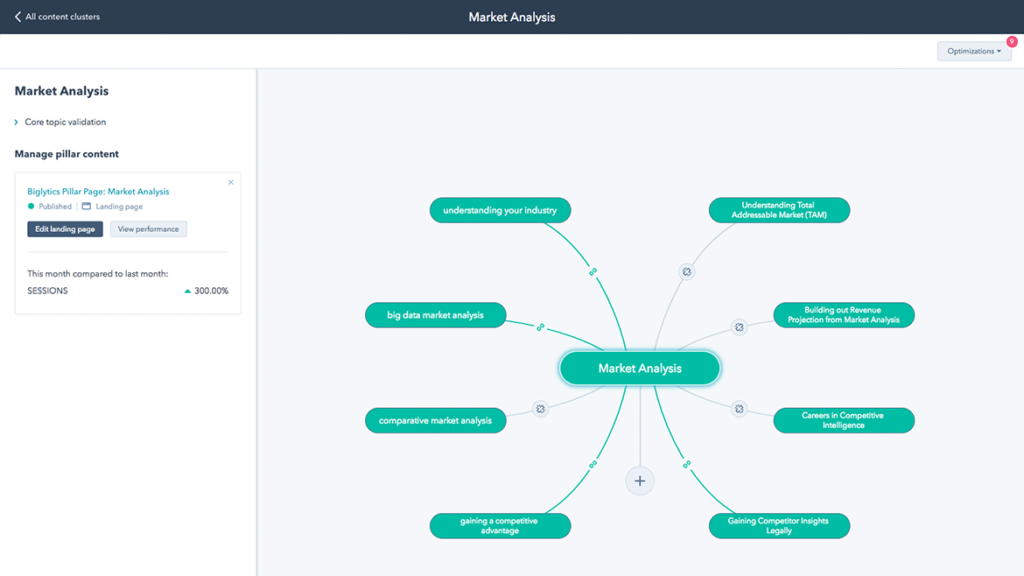Written By:
Tim Stobierski
If you’re a marketer—and even if you’re not—then you know just how important content is to getting your company found by customers.
Content is what ranks for keywords in organic search; content is how you educate your leads and convert them into customers; content is how build authority for both your brand and your website. And with more and more people using social media to inform their buying process, content is also how you broaden your social reach.
Take the Guesswork out of Inbound
Receive a detailed Inbound Marketing Strategy in 30 days or less.
Or is it?
Just a few short years ago, it seemed possible (even if improbable) that referrals of web traffic from social media might one day match that of organic search. But according to a new report by BuzzSumo that analyzed 100 million posts published to social media in 2017, those days appear to be behind us. Two of the most important takeaways of the report are:
- Content on social media in 2017 was, on average, shared 50% less than it was in 2015
- Google is driving about twice as many referrals (clicks) as social media
Why Social Sharing of Content is Down
There are a lot of potential reasons that social sharing of content is down, in general, and it would be difficult to get into all of those reasons here, partially because it’s difficult to prove direct causation. But there are a couple of big reasons that we can all generally agree to, and which BuzzSumo specifically points to in their report:
Facebook’s Algorithm Adjustment(s):
Last year, Facebook announced that it was going to make changes to its algorithm that would “deprioritize” (read: punish) publishers of poor quality content. This was specifically designed to reduce the number of click-baity article headlines circling the average user’s newsfeed (like this gem from Buzzfeed).
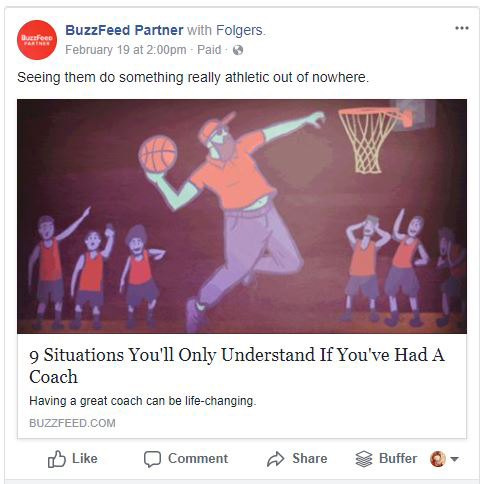
And then again, in 2018 Facebook announced additional changes to their algorithm that would essentially dial back how much content users see from “publishers” of any sort: Whether news organizations, company websites, or magazines.
Both of these algorithm changes have undoubtedly had an impact on how much content is being shared on social. After all, it’s hard to share something if you never see it in your news feed in the first place, right?
Topic Saturation
And then there is the fact that marketers, webmasters, news organizations, etc., have all gotten really good at churning out content as quickly as possible when there is an obvious demand for it. They’re so good at it that the amount of time it takes for saturation to occur has steadily declined over the last few years.
To illustrate that point, BuzzSumo points to the fact that in December 2017, during the height of the Bitcoin excitement, there were 40,000 articles published on the topic every week.
The challenge here is obvious: When you’re competing with thousands of other voices for eyeballs on any given subject, it can be difficult to be found.
So, what’s a marketer to do?
All of this may sound like it’s proof that you should close down your company Facebook/Twitter/LinkedIn accounts and move on. But that’s not the case, for a couple of reasons.
First of all, even if your content is not being widely shared on social media, your social accounts play an important role. Almost all of your potential buyers now have at least some kind of social media account, and they expect to be able to find you on their network. (And if they can’t, then they might start to question whether you are an established-enough business for them to work with.) If that is where your potential buyers are spending their time, then you’ve got to make sure you have at least some sort of social presence so that they can find you there if that’s where they begin their search.
But beyond that: The decline in social shares of content has not been across the board. Though companies like Buzzfeed, Mashable, Ranker, etc., have seen their number of shares decrease since 2015, other organizations like the New York Times have actually seen their shares increase in that same timeframe. And referrals (again, clicks) to the content from those shares also increased.
And that is proof of a very important thing: Content can still get shared on social media and drive clicks to your website. It just needs to be the right kind of content.
What kind of content does well on social?
Generally speaking, it’s the same content that does well in organic search, although there are some obvious differences (for example, though keywords play a large role in organic search, they’re less important in the world of social sharing).
You can increase the likelihood of your content performing well in both social and organic search by following the general principles that we outline here:
1. Create high-quality, comprehensive content that is valuable to the reader (viewer).
If you want your content to do well in both social and search, then it needs to provide some value to the consumer. This value can be in the form of entertainment, or it can be in the form of information. Information is what we’re talking about here.
Creating comprehensive content that anticipates and answers all of the questions that the reader (your ideal buyer) has about a topic is a surefire way of creating value. If the reader finds value in your content, they’re likely to link back to it from their own websites (helping you in search) or share you on social media (helping you in social).
We are calling this approach to content creation the Pillar Page and Topic Cluster Strategy, and we’re seeing a lot of success with it. HubSpot is so confident in the concept that they’ve recently killed their keyword tracking tool in favor of their Content Strategy Tool, which was specifically designed for organizing content into topic clusters.
It is especially important to remember that Google and other search engines use a number of factors to determine which content to prioritize in search results, and that the exact mix of those factors is not known. One factor that definitely comes into play, though, and which applies here is word content length.
There is no specific word count that your content should be to ensure that it ranks well; instead, you should simply aim to be as thorough and complete as possible. That being said, generally speaking we have found that content that is at least 600 words in length will perform better than shorter content, which is often classified as a “stub” and deprioritized in search because it is assumed that it is not thorough enough to provide true value to the reader.
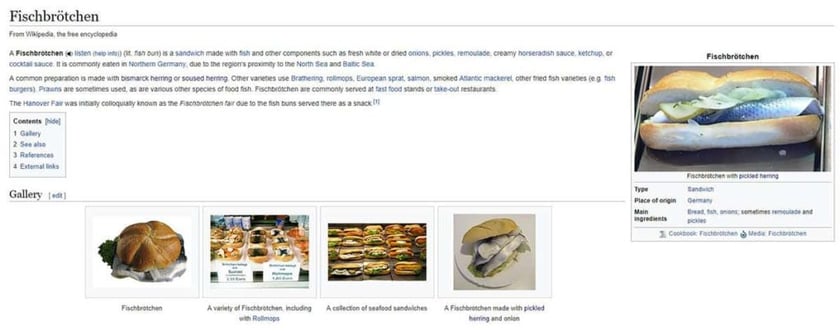
For example, this Wikipedia article about a, um, tasty North-German fish sandwich.
2. Favor evergreen content over trending topics.
As we discussed above, we’re entering a time of peak content saturation: For the vast majority of topics, there are already thousands of articles published and shared on social media, and for new topics, it doesn’t take long for saturation to occur.
But that doesn’t mean that you stop creating content. Instead, it means focusing on creating the right kind of content, the kind of content that stands out from the noise. Creating complete and thorough content (like we discuss in #1 above) will help with that. But choosing the right topics is just as important.
When a topic is trending, it gets a lot of attention on social media and in organic search. Content producers realize this and pile into the subject with their own content, hoping to ride the wave. And some of them do spectacularly well. But the vast majority dive in when it is already too late.
My advice? Stay away from trending topics in general unless a.) it ties back very strongly to your business or b.) you can create content that is way better, or at least somewhat different, than your competition.
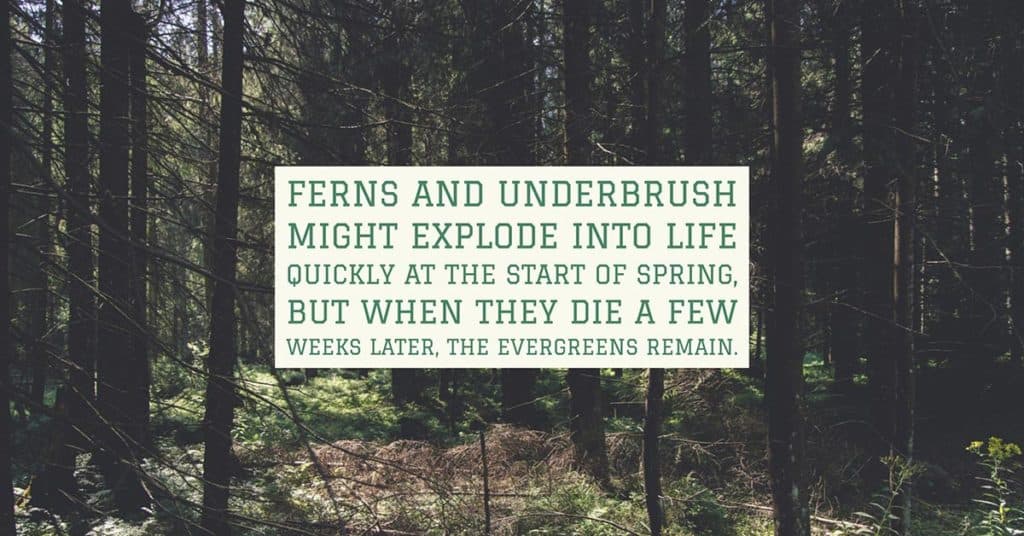
By creating better or different content, you win in two ways. First, your content may latch onto the trend and do well initially, because it stands out from everything else. But that’s not even the real benefit. The real benefit is that content that is truly better and different from everything else out there will continue to do well, both in social and search, well after the trend has passed.
Don’t think you can create high-quality content around a trending topic fast enough to ride the wave? Don’t sweat it. Instead, focus on creating extremely high-quality, durable evergreen content that will live on your website for years, accruing backlinks and authority. That’s the kind of content that people find on their own, anyway, and which they’re likely to share on social on their own, because that’s the content that gives them the most value.
3. Create visually-compelling content.
Humans are visual creatures. That’s how we survived our early days in the plains of Africa (queue Toto soundtrack), why we love art, and why increasingly, we find ourselves sharing something on social media.
Text is great, especially when you want to learn something, but it doesn’t exactly pop off of the page, especially when you’re rapidly scrolling down a Facebook newsfeed on your phone when your boss isn’t watching.
What does pop off the page? Visuals. Photos, illustrations, video. And the more unique or the higher quality those visuals, the better.
The good news is, it’s relatively easy to leverage this fact in your content strategy. By simply ensuring your include relevant media in your content (featured images, charts, video, etc.) you are setting yourself up for success. Going a step further and creating your own visuals instead of relying on stock photos or videos created by others is even better. (Just makes sure that your video is optimized with user experience in mind.)
These visual assets will help you stand out from the noise on social media, for sure, but also come with the added benefit of helping your content perform generally better in organic search as well. Different people like to consume media in different ways, after all, and Google knows this. For that reason, it tends to prioritize content with a number of formats (text, image, video) included on a single page.
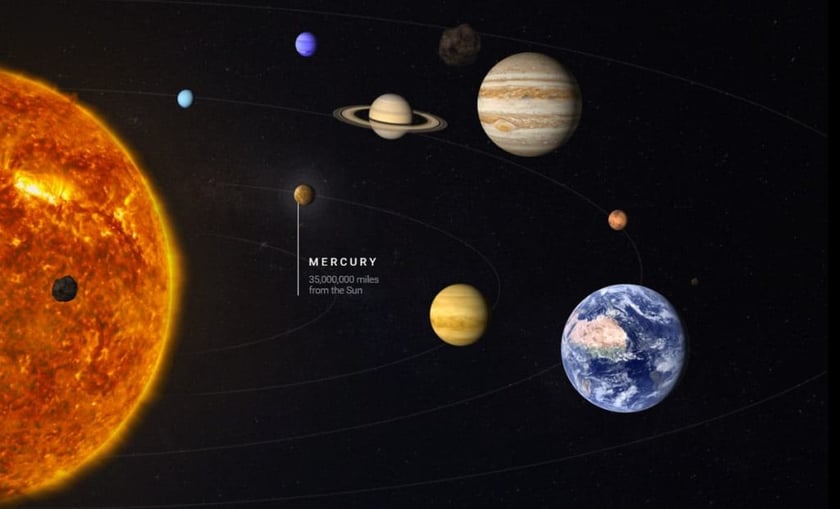
This beautiful image is actually an interactive infographic created with Ceros that provides the user with information about each planet when they hover over it with their mouse.
This visual content isn’t only limited to photos, illustrations, and video, though. Infographics, especially interactive infographics (like the one above) can be incredibly eye-catching, entertaining, and informative, all of which makes individuals want to share and link to them, helping your content perform better in both search and social.
4. Know your audience, and use that knowledge while creating and distributing your content.
You can dramatically increase the likelihood of your content performing well in both social and search by doing one simple thing: Understanding your ideal buyer. By truly understanding your buyer, you can create content that will resonate with them. That content is the kind of content that they are going to share, link to, and, generally, engage with.
The single best way to better understand your buyer is to ask questions. One of the single most important questions to ask is: What motivates them into action? By knowing this answer, you can create content that has a higher probability of getting them to do what you want them to do (in this case, to click your link, read your content, and share it with their network).
If, for example, you know that your audience is heavily motivated by their emotions or passions, you can use that knowledge to create content that is guaranteed to appeal to them. The New York Times, for example, knows that its readers tend to be passionate about politics, and they have done extraordinarily well for themselves in the year since Donald Trump was elected president by creating content that fuels that passion.
But you should only do this if it makes sense for your business. A clothing boutique, for example, has no business writing about politics, even though their average customer might be passionately motivated by political discussion. There’s simply no benefit.
A company that does this well is Endangered Species Chocolate, a company that built its brand around donating portions of their profits to helping to protect endangered animals. This mission resonated with their customers and helped to establish it in the market. Because they know that their audience gets fired up by content about conservation efforts, and because it directly ties back to their business model, they occasionally create content about those topics (for example, this article about sea turtles), which performs well in both search and social.
Another important question to ask of your audience is: Where do they get their information? This is important because it will inform your content distribution strategy.
For example, if you are sharing your content on Facebook but getting little interaction from it, it could be that your content is bad. But it could also be that your ideal audience simply isn’t on Facebook. They might be more active on Twitter, or on LinkedIn, or even on Instagram.
For your content to be successful on social, it’s incredibly important that you pursue the correct channels. Otherwise, you might as well just be screaming into the void.

The Bottom Line
Just because content isn’t being shared as much on social media or being engaged with as much as it was a few years ago doesn’t mean that it doesn’t have a role to play in your content strategy. If you’ve found your social efforts aren’t meeting expectations, it just means that you need to take a step back and reevaluate what you’ve been doing. Are you creating high-value content that readers actually want? Are you falling short on the visuals? Are you using the same social network as your ideal buyers? The answers to these questions can help you get the most out of your social strategy, even if you’ve noticed a slip in shares or engagement.



